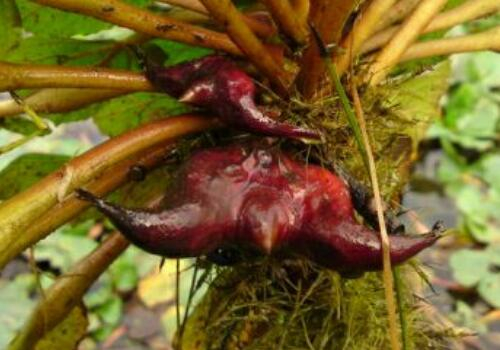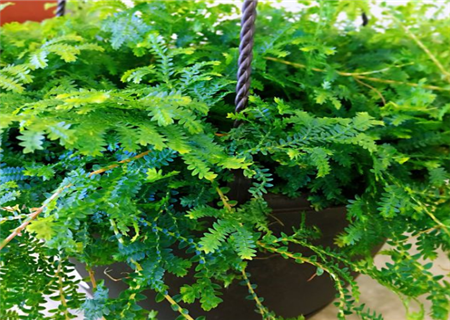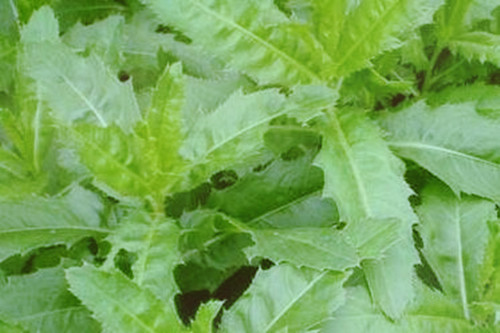How do aquatic plants grow in greenhouses? When to pick? How many catties can one mu of land produce?
Water chestnut, water chestnut, water chestnut, When will it be picked? How many jin can one mu of land produce?

When will the water chestnut be picked? How many jin can one mu of land produce?
The picking time of open-air planting water chestnut is from August to October, and the yield of one mu is 2000-3000 jin. The picking time of greenhouse planting water chestnut is from mid-May to November, and the yield of one mu is 5000-6000 jin.
High-yield cultivation techniques of water chestnut in greenhouse:
Second, how to cultivate water chestnut in greenhouse?
The main results are as follows: 1. The water layer of water chestnut in greenhouse should be kept stable at seedling stage, otherwise the growth of water chestnut seedlings will be affected. According to the production target of fresh water chestnut 1.5t/667m2, the ternary sulfur-based compound fertilizer (15-15-15) 15kg/667m2 fertilizer was applied and transplanted.
2. During the peak period of separation, the plate should be thinned in time, and the plate should be kept at 15-20 / m2. In the process of picking, the weak and small diamond should be removed at any time to keep the number of diamond plate at 15-20 / m2, so as to cultivate a robust diamond plate with a diameter above 30cm, so as to prevent the diamond plate from sealing the water surface early and opening small, affecting the yield. Topdressing is carried out many times.
3. Apply compound fertilizer 10kg/667m2 at the early flowering stage (about 45 days after transplanting), and then apply Jiameilai 5-8kg/667m2 or compound fertilizer 10kg/667m2 immediately after each harvest. After the third harvest, about 40% of the pond was removed, and the ternary compound fertilizer 15kg/667m2 was applied after dredging the pond.
When topdressing with a distance of about 2m, gently push off the diamond plate with your feet, grab a handful of fertilizer and put it into the water. From 7:00 to 8:00 or 17:00 to 18:00 on a sunny day, spray Jiamei platinum or gold spot, combined with insecticidal spraying.
4. in the full flowering stage (when there are 3-4 water chestnuts per rhombus), chemical control with paclobutrazol has a significant effect on improving the fruit setting rate of water chestnut. Water chestnut fields should pay attention to the frequent change of water, maintain ventilation, generally change water around 6:00, keep the water layer 20-30cm, and keep the water layer with high temperature and water layer above 30cm in summer.
5. The field must be flat, and it is easy to grow weeds if it is not high or low. Water chestnut is sensitive to herbicides. Once weeds are found, they should be pulled out manually as soon as possible.
6. At this stage, we should focus on the control of moss in the shed, control the harm of Oncomelania hupensis, and manually remove four-leaf duckweed in time to prevent spread, otherwise it will affect the photosynthesis of water chestnut. At the same time, reasonably control the greenhouse temperature, timely ventilation, when the greenhouse temperature rises to 20 ℃ in the morning to facilitate ventilation and cooling, control the temperature at 20-30 ℃, put down the film machine at about 15:00 to keep warm.
In July and June, when the temperature is slightly higher, tie up the greenhouse skirt with rope to facilitate ventilation and cooling, and then remove the greenhouse film after the rainy day, so as to prevent the unstable temperature and torrential rain from scouring the diamond plate, which is not conducive to blossom and bear fruit.
8. Prevention and control of diseases and insect pests: the main diseases are rhombus blast and rhombus brown spot, so we should pay attention to reasonable close planting, maintain water circulation and prevent pollution. Spray control with 750 times of 20% tricyclazole or 600 times of 50% carbendazim.
The main pests are firefly beetles, leafhoppers and aphids, which can be sprayed with 1000 times of cypermethrin and controlled 2-4 times according to the occurrence of insect pests. According to the practice of planting water chestnut in recent years, in order to achieve high yield, we must do a good job in the management of diseases and insect pests, reduce the occurrence of water chestnut diseases and insect pests, and let water chestnut grow efficiently!
Time: 2019-04-07 Click:
- Prev

"Blue cypress" Cuiyun grass leaves dry how to do? What are the breeding methods? How do you breed?
Cuiyun grass may be relatively rare. It belongs to the perennial herb of Selaginaceae. It is cultivated in many areas of our country and has medicinal value and ornamental value. The whole grass can be used as medicine, can be dried or used freshly. It can also be cultivated as a potted plant at home. So what if the leaves of Cuiyun grass are dry? What are the culture methods of Cuiyun grass?
- Next

What are the effects and effects of rural wild vegetables (small thistle)? What kind of disease can you cure? How do you eat it?
There are many kinds of wild vegetables in the countryside, such as Portulaca oleracea, plantain, bitter herb and so on. They all have different functions. Today, I would like to introduce to you another kind of high-quality wild vegetables, also known as thistle. What are the effects and effects of the thorn herb? What kind of disease can you cure? How do you eat it? Brief introduction of Castanopsis grossedentata
Related
- Fuxing push coffee new agricultural production and marketing class: lack of small-scale processing plants
- Jujube rice field leisure farm deep ploughing Yilan for five years to create a space for organic food and play
- Nongyu Farm-A trial of organic papaya for brave women with advanced technology
- Four points for attention in the prevention and control of diseases and insect pests of edible fungi
- How to add nutrient solution to Edible Fungi
- Is there any good way to control edible fungus mites?
- Open Inoculation Technology of Edible Fungi
- Is there any clever way to use fertilizer for edible fungus in winter?
- What agents are used to kill the pathogens of edible fungi in the mushroom shed?
- Rapid drying of Edible Fungi

